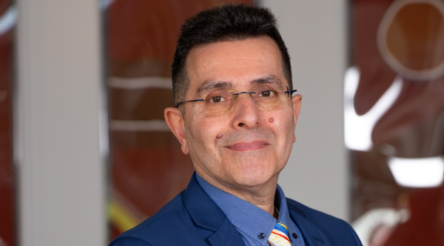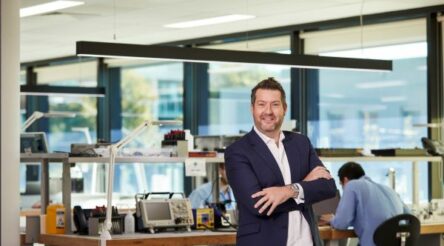Bends, barbs and beyond

For the sixth profile of a nominee for our Australia’s 50 Most Innovative Manufacturers list, we learn about Wireman. Brent Balinski speaks to co-founder Ian Lowrey about how the fencing products company decides on the right problem.
Five-year-old business Wireman has a simple mission. It gives its value proposition as: “Tools and equipment that make fencing faster and easier for land owners and fencing contractors.”
Simplicity rules at the small manufacturer. And innovation, as this series has shown so far, does not equal more for the sake of it.
The long-time industrial designer co-founded Wireman with his patent attorney, Fraser Old.
In the beginning, Old asked if the problem of tying barbed fencing wire could be addressed, before Lowrey saw that the real problem was in removing the barbs. Their first product, the DeBarber, was later released.
“Then when I was looking at the whole industry, the one thing I found that everyone was complaining about was the wire grippers and the wire-tensioning equipment that was available,” recalls Lowrey.
The resulting product, sold as Jack The Gripper, has been their most successful. According to Lowrey, they’ve moved over 15,000 units, with British Rail a customer, and exports to the US to begin this year.
The grippers form part of various kits sold by Wireman, are cheap enough to be a “gateway product”, and are small enough to be sent through the postal service – “That just means we just broaden our market scope much more that way”.
Lowrey explains: “That’s got us out there. And so what happened was, that meant that we could go on and do internet marketing and sell this that way.
“Also a lot of the people are remote. And if you think back to – in America they had the Sears catalogue and people bought out of that and it got shipped out to them and away you went.”
The business isn’t huge right now, though is roughly doubling revenues year-on-year and expects to pass the $1 million mark in 2023.
On product development, Lowrey outlines a simple approach.
A problem that has identifiable commercial value is picked. Product testing is kept minimal unless there’s a safety issue to be addressed.
A prototype is made to see if it works and passes “the pub test,” and they’ll decide how well it could be produced at scale and taken to market. A small run is then made to see how the market responds.

The Fence Magician tool
“And then, if that goes well, we’ll go to a limited run of them, maybe a hundred or so of a particular device, or 200, then take that to market,” adds Lowrey.
“See how it goes, see what people feel about it, and then with that really start to understand what it’s going to cost to scale up. If it’s working, we’ll carry on. If it doesn’t, we’ll drop it…
“From a product development perspective – I’ve been at this quite a long time – and it’s more, because we’re here trying to commercialise things as quick as possible, really, most of the thinking is about how not to add in any problems or add in anything that would impinge our ability to manufacture quickly.”
On the topic of innovation, he admits he and business partner Old have different understandings – unsurprising given their backgrounds – but agree there is no point addressing a challenge with no commercial usefulness.
“I come at it from the point of view ‘can it be done, and can it be done at a price… someone is prepared to pay for it, and that a large amount of people are going to pay for it?’” Lowrey explains.
“I think around all those sorts of things. I sort of think three-dimensionally, so I think about the problem, whereas sometimes Fraser will present me with a problem… and then I’ll give it some thought. If I think we can solve the problem, then we’ll step into it.”
In this episode of @AuManufacturing Conversations with Brent Balinski, Lowrey tells us about trying to contribute simple though meaningful innovations to the fencing industry, a place where a lot of products “haven’t really been looked at in any great detail for well over 100 years.”
Episode guide
1:12 – An introduction to Wireman and Ian Lowrey, a product designer who was introduced to the problems of wire fencing by his patent attorney.
2:20 – Started looking at barbed wire and the challenges faced by contractors. Invented the DeBarber.
3:10 – Everyone wanted better wire grippers, so they developed these.
4:14 – The issues with torsion springs.
6:18 – Fencing is a dangerous thing.
6:45 – Adoption of 3D printing at the business. Printing in aluminium has been “quite a big deal.”
7:20 – The main considerations in product development
8:30 – How they understand innovation and what they rule in and out when product ideas are considered.
10:35 – How product testing and customer feedback influence Wireman.
12 – A mixture of contract and in-house production.
13:30 – How wire grippers have been a good “gateway product”.
15:25 – Why there’s been a deliberate effort to make smaller-sized equipment.
16:55 – A boost from being featured on the Farm Learning with Tim Thompson Youtube program, and why Youtube is an important medium for people in the bush.
18:40 – “A lot of room to move” in their sector, though there are challenges to having their products adopted.
19:55 – Issues around IP for manufacturers trying to scale up.
Pictures: supplied
Further reading
WE ARE TRYING TO IDENTIFY AUSTRALIA’S 50 MOST INNOVATIVE MANUFACTURERS. NOMINATE NOW
Is your company one of Australia’s 50 most innovative manufacturers? We want to hear from you.
PUT YOURSELF FORWARD AT THIS LINK. NOMINATIONS CLOSE AT 5 PM (AEST) ON MAY 26.
WATCH OUR LAUNCH WEBINAR HERE.
![]()
Australia’s 50 Most Innovative Manufacturers is a new campaign by @AuManufacturing. It has been made possible by the generous support of MYOB, SMC Corporation Australia, and Bosch Australia Manufacturing Solutions. Be sure to check back at this website for regular updates including profiles of nominees and other information.
@aumanufacturing Sections
Analysis and Commentary Awards Defence Manufacturing News Podcast Technology Videos










